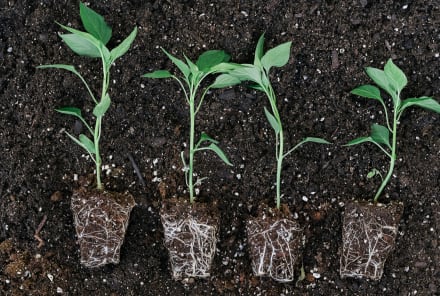Advertisement
The US Just Set An Impressive Climate Goal — How Can We Make It Reality?


In a historic first, this week President Joe Biden gathered 40 world leaders for a virtual Leaders Summit on Climate.
Over the two-day summit, policymakers and financiers from around the world phoned in to share how they planned to reduce their greenhouse gas emissions. The ultimate goal is to limit planetary warming to 1.5 degrees Celsius above pre-industrial levels, as proposed by the Intergovernmental Panel on Climate Change (IPCC).
This summit comes in advance of the 2021 United Nations Climate Change Conference in which all members of the Paris Climate Agreement will reconvene to go over their emissions reduction targets. (These targets are called "nationally determined contributions," or NDCs, an acronym you'll probably see more of in the coming months.)
When the Paris accord was first signed in 2015, member countries agreed to revisit and potentially update their NDCs every five years. This first check-in was postponed a year because of COVID-19 but will be taking place in early November in Glasgow.
What new climate commitment did the U.S. make?
In addition to officially rejoining the Paris Climate Agreement on his first day in office, President Biden used this summit to announce that the U.S. will be strengthening its commitment under the agreement and pledging to cut nationwide greenhouse gas emissions by 50 to 52% come 2030.
"The signs are unmistakable. The science is undeniable. The cost of inaction keeps mounting," Biden said of the impetus for this new reductions goal, which is about 12 to 14% higher than our previous 2015 commitment.
Following this announcement, Secretary of the Treasury Janet Yellen said that this goal won't happen unless we get a "sprinting start." The details of how the U.S. will try to move to a lower-carbon economy so quickly haven't been announced but will likely need to include cutting reliance on coal, speeding up the production of renewable energy infrastructure and electric vehicles, and investing in natural climate solutions like forest plantings and regenerative agriculture.
How can we turn this goal into a reality?
The big caveat here is that this commitment is largely nonbinding. That's where we climate-loving citizens come in.
By keeping the pressure on our elected officials to work swiftly toward achieving this goal and doing our part to reduce our own emissions, we can help keep the momentum going in the lead-up to 2030.
As for how, climate scientist and author of Under the Sky We Make: How To Be Human in a Warming World, Kimberly Nicholas, Ph.D., says voting for candidates with good climate scores (female candidates1 tend to be especially strong in this department) will be particularly essential moving forward, as will writing and calling your reps directly with your climate concerns. Volunteering with climate organizations and social movements that are urging leaders to go fossil-free is also a great way to further the cause. (350.org, Fridays for Future, and Evergreen Action are a few Nicholas recommends.)
"And for high-emitting individuals (starting at incomes of $38,000 and higher), the fastest way to cut climate pollution is going flight-, car-, and meat-free. These changes make a huge difference for how fast we can actually make the transition to zero emissions happen," Nicholas tells mbg, stressing that flying less is particularly impactful. "You'd have to skip meat for two years or avoid 10,000 plastic water bottles to equal the climate savings of skipping one round-trip flight from NYC to London."
All the while, we also need to support a just transition for fossil fuel industry workers and ensure that everyone has access to this new cleaner, low-carbon society we're creating.
"President Biden's commitment to cut GHG emissions is a step in the right direction, but carbon alone does not address the realities of front-line communities disproportionately impacted by climate change," Gloria Walton, CEO of climate justice philanthropy fund The Solutions Project, tells mbg.
This means encouraging the government to consult and actively collaborate with communities that are bearing the brunt of a warming world. "Thanks to communities organizing and building power at the ballot box, we have a federal administration committed to climate action. We have to work harder than ever because the time is now to move a people's agenda for climate justice solutions," Walton adds.
Twenty countries are currently responsible for around 80% of global emissions, so other high emitters will need to show a similar sense of urgency as we approach 2030. This week, Canada, Japan, and Brazil also committed to taking bolder stances on climate moving forward.
A cautiously hopeful end to Earth Week.
This summit comes at the end of an Earth Week in which citizens took to their streets (and webcams) to demand more climate action. In one of the biggest demonstrations, activists from 350.org, US Youth Climate Strike, and Build Back Fossil Free took to Washington, D.C., armed with "climate clocks" that count down the amount of time we have to make changes if we want to avoid the most catastrophic impacts of a warming world.
Over in New York City, one such clock got a makeover this week. In addition to counting down a critical climate deadline, the 80-foot Climate Clock in Union Square now counts up: Its hopeful new face tracks the percentage of global energy generated by renewable resources, currently 12.2%. "The Earth has a deadline," the clock now reads. "Let's turn it into a lifeline."











